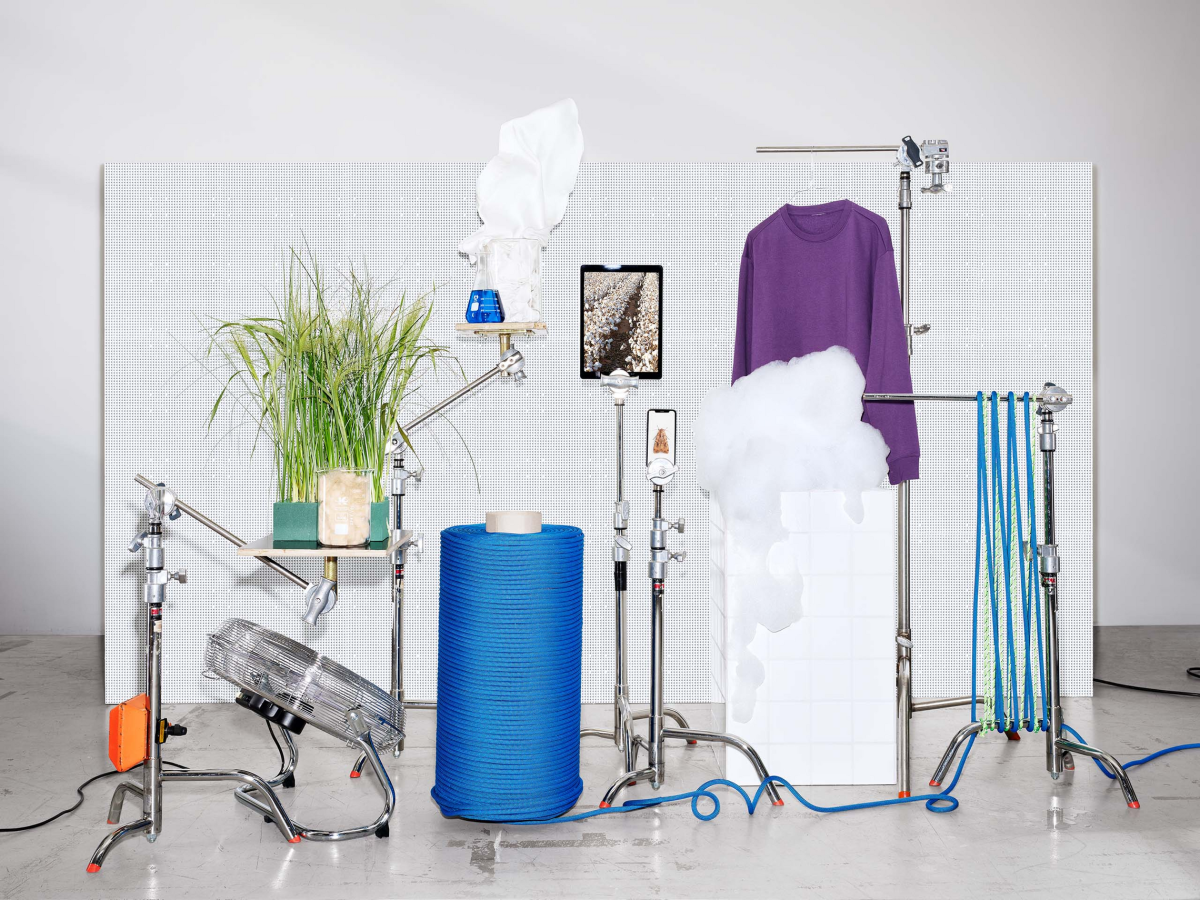
Blomgren is the creative director of SALLY, which she describes as a future manifestation lab within the design agency EY Doberman, aiming to use tech, design, and innovation to visualize a radically better world.
You’ve just launched a new website, report, and initiative called Preferable Future of Fashion. What is it?
— In order to create the future that we want, she explains, we first have to imagine it. But right now our collective imagination is failing us. It almost seems easier for humanity to envision the end of the living world than a different way of life. We want to change that by the concept of ’preferable futures’ — exploring thriving, realistic futures in a radically fair and sustainable world. And since our craft is the design of digital products and services, we visualised our Preferable Future of Fashion through that lens.

You particularly point out the urgency of ’changing the system’. Which system? What’s so wrong with it? And what needs to be done in order to change it?
— That’s a great question, and a big one.
— Charlie Munger once said: ’Show me the incentive and I will show you the outcome.’ Likewise, a system can best be understood by what motivates its actors. Our current economic system is incentivized by constant growth. For the fashion industry, that has translated into continuously selling more and more garments to more and more people. As a result, we are now producing 100+ billion garments every year — and counting — while discarding and burning them at the same mind-boggling pace. This waste is only possible as we have externalised the true cost of fashion. Instead of paying for fair labour and environmental damages, the cost is pushed to developing countries and future generations — which, it turns out, happened to be us. I believe that fixing the system starts with changing the core incentives and fairly pricing environmental and human costs. And that, in turn, will lead brands to new business models that are regenerative instead of harmful.
We cover, for instance, material innovations on our platform every week — and so do our industry colleagues. Are these not also important for the industry, in order to reduce emissions and impact? Or is the problem that the focus is too much on such innovations?
— When we talk about sustainability, we need to distinguish between incremental solutions that do ’less harm’ — also known as improvements — and transformative solutions that aim to rethink the underlying system, says Blomgren.
— Yes, we need both types. But most of what we call ’sustainable fashion’ today only falls into the first category. Solutions that are still harmful, but slightly less so. And that is a big problem because the improvements we have seen in fashion in the past years are still not having any effect. What we are doing now isn’t working. We need to think bigger!
— The bottom line is quite simple: we cannot continue to live outside of the physical boundaries of the planet. Us Scandinavians, for example, need to reduce our CO2 emissions by 80-93% for even a coin toss chance of preventing cascading climate collapse. 80-93%! That leaves room for something like two to three new garments per year. And that, in turn, would require those garments to be made to last a lifetime. Super high quality and easily repairable — with a digital twin (a virtual model created to accurately reflect a physical object, Ed’s note) that enables seamless sharing, swapping, renting, and upcycling. The role of brands in such a future would look very different from today. It would be about building and facilitating services at the core of that new ecosystem, instead of producing and selling an infinite number of new garments.

If you were to envision your own Preferable future of fashion. What does it look like?
— I didn’t fully grasp the urgency of the planetary crisis until a few years ago, in 2018. It was a brutal awakening and changed my view on almost everything. As a result, I decided to change how I eat, live, shop, and travel — using myself to prototype a different way of life. And while it seemed like a huge sacrifice at the time — I literally cried at the thought of giving up flying — I have never looked back. Today I only buy second-hand, or rent and swap. I repair things that break and sell what I don’t use anymore. And the thing is, it doesn’t feel like a sacrifice at all — it’s liberating. But most digital products for second-hand shopping and selling are still sadly and unnecessarily underwhelming. So my own preferable future of fashion is a whole world of smart, fun, and beautifully designed services for sharing. Come on fashion industry, what’s the hold-up?
How will you continue to work on this project? And except for that, what else do you have coming? News? Special projects?
— We are currently working on a really exciting project around the new era of fashion with our friends at Swedish Fashion Council. We are also thrilled to be helping Science Park Borås in the vision of making the Västra Götaland region the European hub for circular fashion and textiles, as well as hosting seminars with RISE on new business models around the connected wardrobe. And, we have just started creating our next Preferable Future, this time for food! Blomgren concludes.





